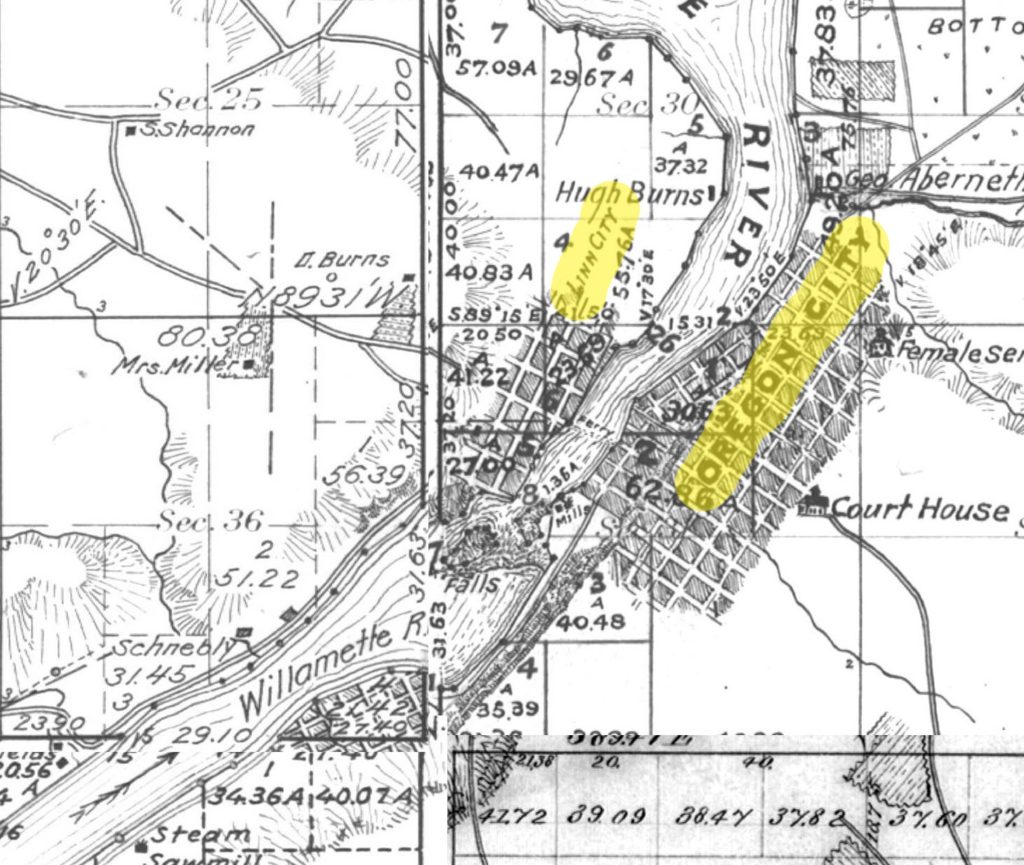Ancestry.com recently introduced a new feature called DNA ThruLines. The idea is to merge DNA evidence and people’s family trees to help you break through brick walls.
It’s interesting, but I have three reservations about the execution:
- The DNA ThruLines icon shows up even when there’s nothing there.
- The “hints” are, ultimately, just other peoples’ family trees, which are typically just copies of copies lacking compelling evidence.
- It doesn’t help me break through brick walls by proposing connections that aren’t already there.
First, the DNA ThruLines user interface tosses up what I would consider false positives. Take a glance at my wife’s family tree. See that little blue ThruLines icons above Oliver Raser? I takes me three clicks to discover that there are no DNA ThruLines matches here.
Don’t waste my time, Ancestry.com. Hide the icon when you don’t have information to share.
Second, DNA ThruLines relies on other people’s family trees, and that’s a garbage-in, garbage-out scenario. To me, it feels exactly like getting hints from other peoples’ family trees, with no distinction between a profile with dozens of sources and one with no evidence at all.
Take my mom’s 2nd great-grandfather, James Brown. I’m confident in this lineage, but the DNA tests from our many distant cousins confirms we’ve got it right.
I have no idea who James Brown’s father was, however. But Ancestry.com has a suggestion: John Edward Brown. But there are no DNA matches from his other children, that is, via James Brown’s siblings—that’s the kind of proof I want to see from DNA.
And when I click through to John Edward Brown on “Steve’s Tree,” what do I get? A profile with no supporting evidence.
Really, how is this any different from family tree hints? DNA ThruLines, despite the cool the marketing language of DNA, is little different from the family tree hints they’ve offered for a decade.
And I hate using tertiary sources like this because they can be so unreliable. I am so reluctant to use them I even recorded a video about what I think is the only safe way.
My third point is that DNA ThruLines is missing the big opportunity here: helping us break through brick walls by identifying siblings and cousins, aunts and uncles. Researching relatives is one of my favorite ways to break through brick walls, as one you see in this video.
Here’s an interesting scenario from my mom’s DNA matches: her maternal line, the Posses, seemed to come to the United States without friends or family. It’s like Charles Poss magically appeared in Pennsylvania.
Now, there’s this really fascinating DNA match with two other members who document their descent from a Jacob Posz who was ten years older than our Charles, who was also a Catholic, and who came from Germany around the same time…
There’s a common ancestor there, but DNA ThruLines isn’t helping me make connections because the trees aren’t already matched together.
Here’s how I’d like it to work. This is also my favorite example of garbage-in, garbage out for DNA ThruLines.
Let’s take Thomas Chew. The consensus opinion is that his parents were Andrew Chew and Anna Mariah Barthist. And look here, Ancestry.com is suggesting Anna Barthist as a match based on similarities between my mother-in-law’s DNA and that of another member who descends through Thomas’ brother, Joseph Chew.
The evidence is pretty complicated, so I won’t present it all here. But the nut of it is that Joseph Chew’s wife was also a Chew, and I think that she was a descendant of Andrew Chew and Anna Mariah Barthist, while Thomas and Joseph Chew were from a completely different branch of the Chew family.
In fact, when I look at my mother-in-law’s DNA matches, she actually has two matches with people who descent from a completely different Chew branch.
Confused? Yeah, I can see why. Put it this way: DNA ThruLines is suggesting that my mother-in-law had two distinct lines of descent. And not because there’s some oddity in her DNA, but because two different genealogists have different views of the evidence and put different lineages in their trees.
What would I like to see? Well, it’s right here with that Chew example. I created a person in my tree named Wild Speculation Chew and connected him to Joseph and William Chew.
I want ancestry.com to take common surnames—like in my earlier Poss example and show me multiple potential lineages, with estimated degrees of separation, based on DNA matches with people’s whose lines of descent don’t appear to converge with my tree.
That’s the real opportunity here: giving me ideas on where and about whom I should research to break through a brick wall.




